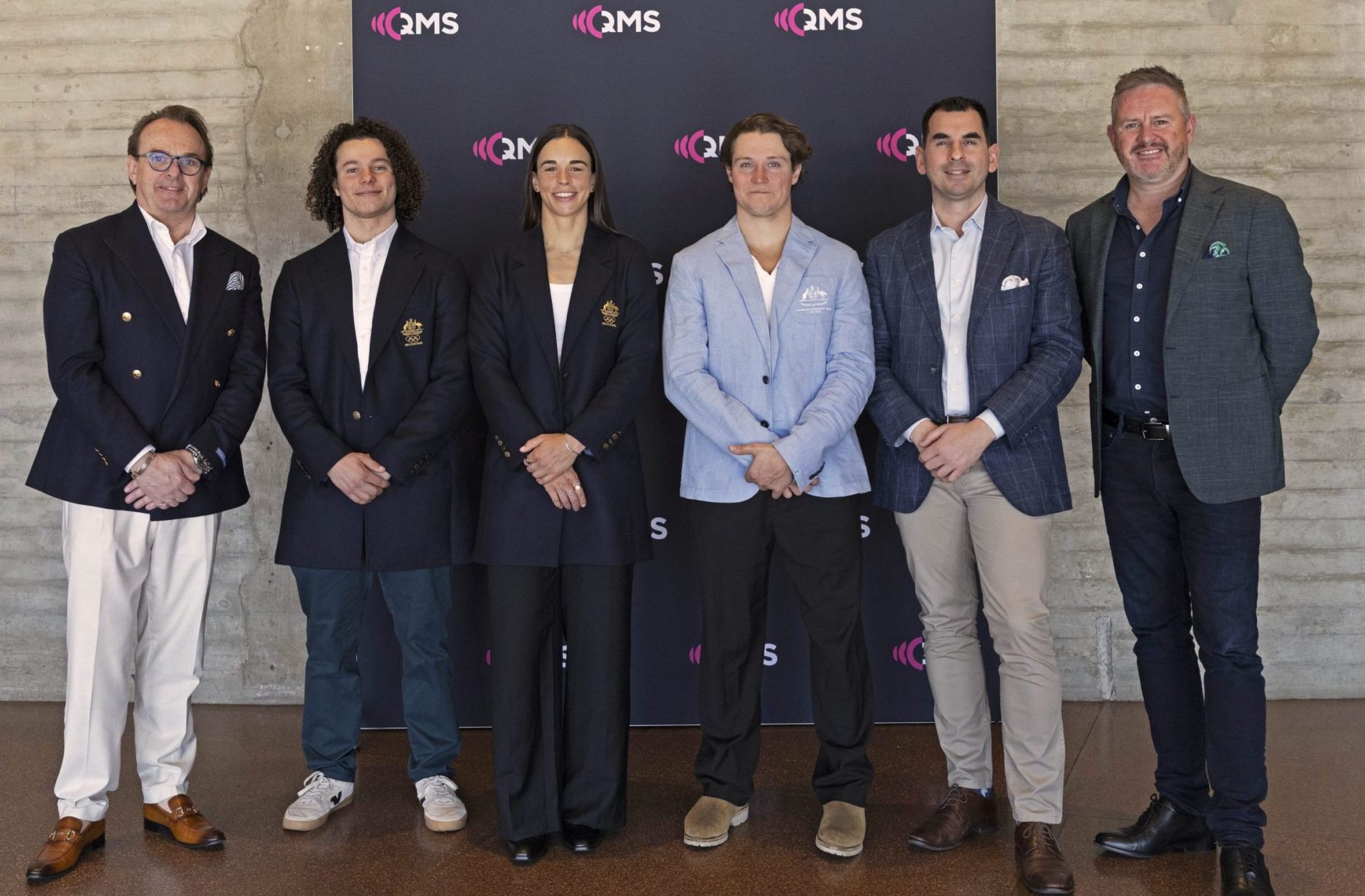Evolving Broadcast Landscape: Why You Have To Know The Fans To Value The Fans

The traditional broadcast interface between sport and its fans is undergoing a generational shift. No longer do we sink into the armchair at home, turn on the TV and watch a match or game from start to finish. We live stream AFL and NRL games to our phones while camping (or at dinner with the in-laws).
We consume English Premier League highlights packages on the commute. Golf fanatics will soon be able to log on to GolfTV and follow the round of a single player rather than whoever the broadcaster chooses. Cycling fans can get an intimate view of what their favourite cyclists are going through.
Cashed up sports are also upping the game on viewer engagement. As fans watch multiple sports on multiple screens, intuitively benchmarking sports against each other in terms of the experiences they provide, sports like the NBA and the EPL are leading the way in terms of providing sophisticated, personalised and exclusive experiences.
Fans are willing to subscribe to content where they see value and, increasingly, the smart sports are augmenting their content with in-screen polling, betting, stats, expert breakdowns of the game and real-time graphical analysis. Platforms such as Vudoo, MIA, Second Spectrum and DOT Loves Data are the emerging enablers of this new value creating. And sports must engage with this new world or risk falling by the wayside.
Velon, the company owned by 11 World Tour cycling teams, is an example of sports being on the frontline of upending the way we watch and listen to sports. VelonLive, a platform co-developed by Ernst & Young and Velon now provides over 100 days a year of deeply immersive and personalised professional cycling content, from on-bike cameras capturing the brutal jockeying deep within the peloton to post-race analysis using each rider’s personal performance data.
When the three-time Tour de France winner and Grand Tour Champion, Chris Froome made his epic decision to launch a solo attack on the Colle de Finestre in the 2018 Giro d’Italia it was a strategy that, for the first time, was being recorded in real time and streamed to cycling enthusiasts.
“It was an extraordinary, highly-orchestrated plan that he launched, and as he shot off the front of the peloton, the Velon platform provided all of the things that a traditional broadcast couldn’t: power wattage outputs, heart rate, cadence, speed, relative position,” says EY Global Advisory Chief Data Officer, Conrad Bates, who helped develop the Velon platform.
“The platform added colour and data to what was unfolding. In a traditional broadcast you just get the footage and the time gaps – not even exact speeds of riders – so this gave viewers what they wanted. It helped not only tell the story as it unfolded but was crucial for the analysis afterwards.”
Kim Brennan, a former Olympic gold, silver and bronze medallist and now a key player in EY Oceania’s Sport Advisory capability agrees. “The monetisation of viewers is just the beginning,” says Brennan. “In my mind, Velon is about so much more than a new commercialisation stream, it’s re-connecting the elite with grassroots participants. Relatable data is adding a richness and colour that has previously been absent from the spectator narrative. Now, from the comfort of our living rooms, or Kickrs, we can watch in awe at the physiology of our cult heroes, bringing connection and colour to the masses to inspire and excite.”
From OMG to OTT
The emergence of Over The Top (OTT) broadcasting is also starting to rattle the cage of traditional broadcasters by allowing sports to stream direct to the viewer in the same way that Netflix, Stan or Hulu do for drama. As the relationship with each fan becomes an important driver of revenue, many clubs and leagues are realising that it’s far better to control the content, the distribution and hence the relationship, in-house. Sports can now index their content according to the value of each fan and “own” them more readily in an ever more crowded marketplace.
OTT runs the gamut from large, existing providers such as Amazon, Youtube and Facebook (Amazon, for example, has been paying about $65 million to stream NFL Thursday Night Games on its Prime Video app since 2017. Facebook recently won the right to be the exclusive International Cricket Council digital content partner up to 2023, giving it rights to share clips from ICC events on Facebook, WhatsApp and Instagram) – to start ups such as OTT platform, YuppTV. In addition to global digital broadcast rights to the Indian Premier League, YuppTV recently gained non-exclusive broadcast rights for India’s home cricket matches outside India, tapping into to the 31 million strong global Indian diaspora.
Smaller sports are also taking advantage of the OTT possibilities, with the World Surf League (WSL) and Ironman streaming their competitions via Facebook. (The WSL has 7 million likes and Facebook says that 3.5 million people watched at least one minute of an Ironman event on Facebook in 2018.)
Formula 1, meanwhile, has opened up its own direct OTT channel to capture revenue opportunities from hardcore fans, “super-serving” unique behind the scenes content, archival content and live footage from 24 different feeds on the track.
At the same time that the connections between fans and clubs, leagues and rights holders are changing, the business-as-usual economics of sports is being upended. Sports and entertainment cable subscriptions and bundles are being disrupted, bringing downward pressure on the value of new broadcast deals.
Combined with falling participation rates in some sports, and sponsors stressing the need to derive a more commercial return on their investment in sport, some sports organisations are staring into a revenue hole.
As this upheaval washes through the sports broadcast space, most of the commentary has focussed on how the codes, especially the larger codes in each country, are going to negotiate their next rights deal. Alongside the question of money, there’s arguably a bigger question at play: how should each sport reassess and transform their capabilities to future-proof their revenue streams – and ultimately their survival?
You Have to Know the Fans to Value the Fans
For Tom Kingsley, leader of Sports Industry Group, EY UK, the required shift is exemplified with a simple thought experiment. Imagine you were able to write a cheque to buy one of the large EPL teams in the UK, he says. For about US$3 billion, you would get a stadium and training facilities, a roster of some of the most gifted – but injury and tabloid-prone – football players on the planet, access to annuities such as sponsorships, season tickets and a share of the broadcast rights.
Crucially, you also get access to around 500 million fans. Now, says Kinglsey, compare that to a content production house such as Netflix that delivers content via their distribution platform. According to the company, they have over 151 million paid subscribers in 190 countries. And as at mid November, the company had a market cap of US$132 billion.
It’s a way of showing how sport can derive true value from knowing its fans: not just the number but understanding them intimately. “If you know who those 500 million fans are,” says Kingsley, “you can segment that between people who have the club’s crest tattooed on their forehead all the way down to a fan in Indonesia who likes Facebook comments about the club’s star player.
If that club was able to extract just 10 cents from each of those 500 million, or 50 cents from 100 million, that $50 million of revenue is equivalent to the value of a high-end shirt sponsorship. “Sports need to understand that growth in the future won’t just come from the value of an individual sponsorship,” says Kingsley. “Instead the growth will come from building a much deeper, personalised engagement with your entire fan base, whether they are inside your stadium for every match, or live thousands of miles away and will never set foot anywhere near your home ground.
“If I was a CEO of a sport right now, my biggest issue would not be how do I get an extra 10 per cent in my next broadcast rights deal. It would be finding out who gives a damn about my sport.”
Dunking on the Revenue Hole
In Game Six of the 2019 NBA playoffs, Golden State Warriors’ superstar guard Klay Thompson is deep in the zone. He stalks the court, terrorising hapless opponents with brutal shimmies and effortless shot-making. When he sinks a three-pointer in the final minutes of the third quarter to put his team ahead, the gold-clad Warriors mob whoop wildly in unison. But along with the 20,000 people hollering courtside and the millions at home riding his every looping arc, there is a non-human form shadowing Thompson and his fellow players, watching and listening to the game. In the background of the broadcast platform, an AI module can recognise when the crowd roars, for example, and link that uptick in volume to the player responsible for the statistical achievement and then deliver the viewer that player’s shoes, jersey and other merchandise in real time.
It’s a module that will roll out this season by Unbnd with the NBA as part of their new mixed-reality platform. “If someone’s done or is doing something spectacular, that’s the time to present their merch and endorsements,” says Arena, whose company created the tech platform. “But it doesn’t need to be merchandise, it can be any content: different statistics on that player, fantasy updates, the live odds of them scoring a certain number of points, what Twitter is saying about the game – really anything.”
“It’s about having different types of sponsorship and allowing your sponsors to leverage their sponsorship more imaginatively and directly than having a static board set up on the edge of the court or field,” says Arena, “Imagine being able to sell advertising that is hyper-direct to the viewer. Instead of generalised advertising, you can personalise the whole environment to the consumer interacting with it. You could have the Top 10 Dunks bought you by Dunkin’ Donuts that’s delivered into the app fully-branded, down to where the nearest Dunkin’ Donut shop is and a single-click option to have some delivered. Instead of revenue being limited by what people buy at the game, the opportunities for advertising suddenly open up.”
“Our platform has created a marketplace where we can give control to both parties about how they interact with the sport without having the middle man. It’s a very direct to consumer model, but it’s the way of the future.”
Written By – Dominic Rolfe, EY Australia, to read the full article, click here.
It's free to join the team!
Join the most engaged community in the Sports Business World.
Get all the latest news, insights, data, education and event updates.






